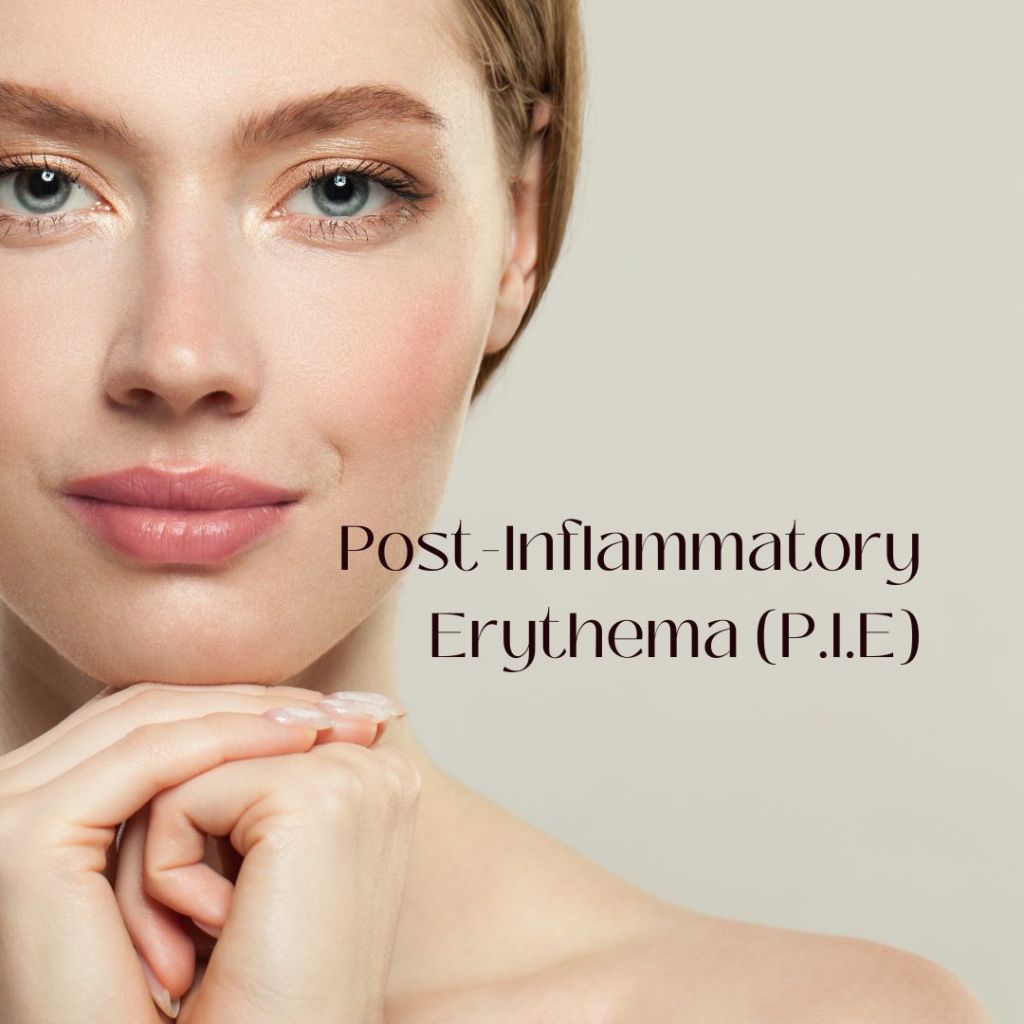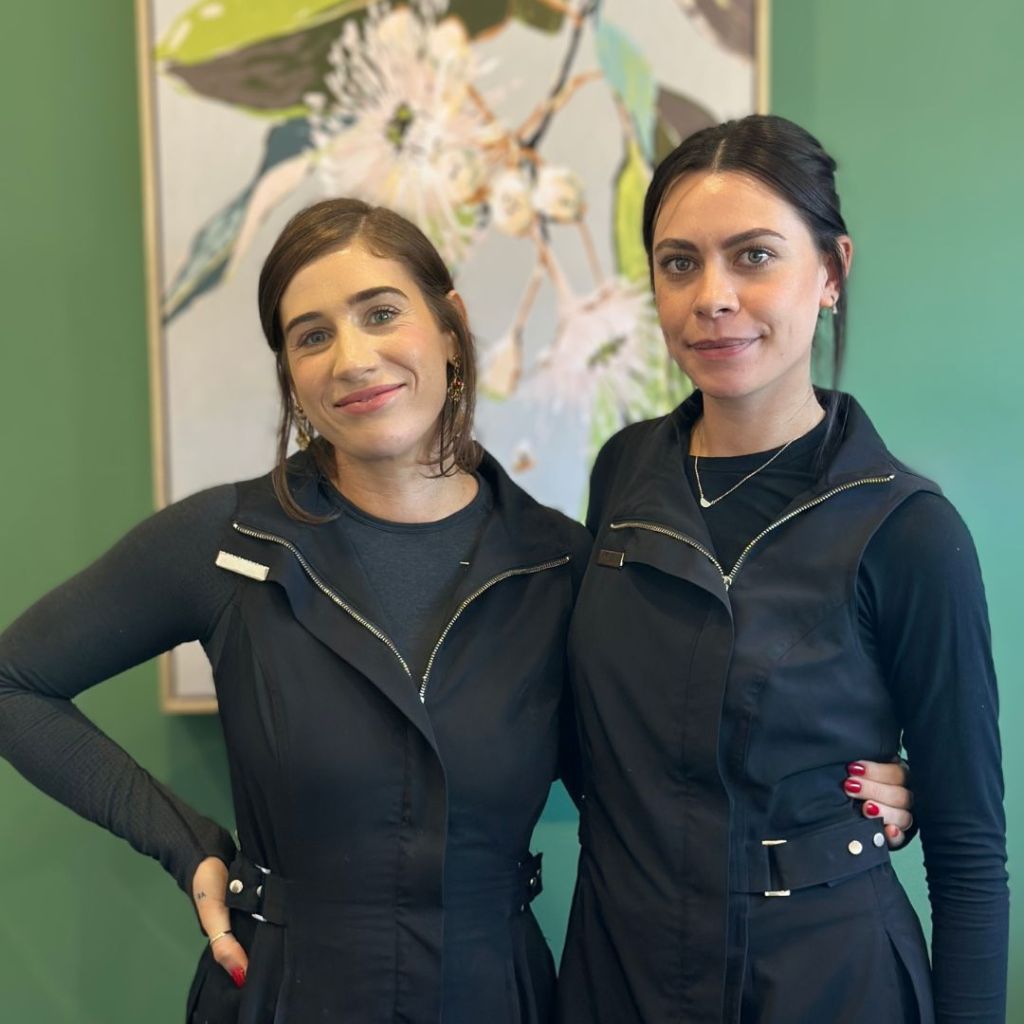Post-Inflammatory Erythema (PIE) and Post-Inflammatory Redness
LED Light Therapy, Azelaic Acid, IPL and Laser to Settle P.I.E
Post-inflammatory erythema (PIE) and post-inflammatory redness are skin concerns that result in lingering redness or pink marks following inflammation. Addressing these conditions requires a multi-pronged approach that prioritises reducing inflammation, calming the skin, and preventing further irritation. We treat post-inflammatory erythema at Pearl Medispa by combining LED light therapy with targeted creams and advanced in-office options like IPL. Our comprehensive approach aims to speed recovery and calm skin inflammation.
TIP: Early LED combined with topical barrier repair and Azelaic acid effectively settles all post-inflammatory redness.
Free Consultation with our Skin Therapists
Book an initial free consultation with our skin therapists, who can assess you and guide you towards the most effective treatments and topicals to soothe your P.I.E. Call 07 3350 5447 or book a skin consultation with Christina or Taylor, our senior facialists and skin therapists.
What is Post-Inflammatory Erythema (PIE)?
- Definition: PIE refers to redness caused by dilated or damaged blood vessels following skin inflammation, while post-inflammatory redness often describes a broader category of redness persisting after inflammatory skin conditions.
- Key Characteristics: Unlike hyperpigmentation, PIE and post-inflammatory redness do not involve brown discolouration or contour changes, as seen in scarring.
Causes of Post-Inflammatory Erythema and Post-Inflammatory Redness
- Acne:
- The most common cause of Post-inflammatory erythema. Inflammation from papules and pustules damages tiny blood vessels, leading to visible redness.
- Other Skin Conditions:
- Rosacea: Chronic inflammation exacerbates persistent redness.
- Eczema and Psoriasis: Prolonged inflammation leads to ongoing erythema and redness.
- Skin Injuries and Irritations:
- Cuts, scrapes, burns, over-exfoliation, and harsh treatments.
- Prolonged Healing and Blood Vessel Damage:
- Inflammation causes increased blood flow, damages capillaries, and delays healing, resulting in lingering redness.
Prioritising LED Light Therapy as a First-Line Treatment
Why LED Light Therapy?
- Red and Infrared Light: Proven to be highly effective in calming skin inflammation and reducing both PIE and post-inflammatory redness.
- Mechanism of Action:
- Reduces inflammatory cytokines and supports cellular repair.
- Boosts collagen production and strengthens capillaries, improving skin tone.
- Encourages healing by promoting increased blood flow and oxygenation to the skin.
When to Use LED Light Therapy
- Early Intervention: Ideal as a first-line treatment for settling inflammation and calming active redness, including post-inflammatory redness.
- Supporting Active Skin Healing: Combine LED therapy with topical treatments to enhance results and expedite recovery
Comprehensive Treatment Approach for PIE and Post-Inflammatory Redness
1. Settle the Underlying Cause
- Control active acne or skin irritation to prevent new inflammation and the recurrence of PIE.
- Use anti-inflammatory skincare tailored to your skin type, focusing on soothing and repairing the barrier.
2. Lifestyle and Preventive Care
- Sun Protection: Apply a broad-spectrum SPF 50+ sunscreen daily to prevent exacerbation of post-inflammatory erythema
Topical Treatments to Complement LED Therapy
Core Active Ingredients:
- Azelaic Acid:
- Reduces redness and inflammation while supporting the skin barrier. It is ideal for PIE and post-inflammatory redness.
- Niacinamide (Vitamin B3):
- It soothes inflammation, strengthens the skin barrier, and improves persistent redness.
- Centella Asiatica (Madecassoside):
- Repairs the skin barrier and calms redness caused by irritation.
- Vitamin C (Ascorbic Acid):
- Brightens the skin and reduces red and brown discolouration, targeting healing and preventing pigmentation and scar formation.
- Tranexamic Acid:
- Modulates inflammation and reduces redness from pigmentation.
Skincare Routine:
- Cleanse Gently: Use a fragrance-free cleanser that does not irritate post-inflammatory redness.
- Hydrate: Apply a ceramide-rich moisturiser to support barrier function.
- Protect: Sunscreen is non-negotiable to prevent further damage and worsening of post-inflammatory erythema.
In-Clinic Treatments
- LED Therapy
- Vascular Lasers (e.g., Pulsed Dye Laser):
- Specifically, it targets blood vessels responsible for PIE and post-inflammatory redness.
- Intense Pulsed Light (IPL):
- Addresses redness and broken capillaries to restore an even complexion, effectively treating post-inflammatory erythema.
- Microneedling:
- Stimulates collagen production and enhances penetration of active ingredients for better PIE and redness outcomes.
- Combination Therapy:
- Use lasers or IPL with LED light therapy for faster and more effective results in reducing post-inflammatory redness.
Why Early LED Therapy is Key
- Immediate Impact:
- Reduces active inflammation and calms the skin before redness becomes chronic.
- Safe and Non-Invasive:
- Suitable for all skin types, with minimal downtime and no risk of irritation.
- Enhances Topical Treatments:
- Improves the absorption and efficacy of azelaic acid, niacinamide, and other actives, accelerating the resolution of PIE and post-inflammatory redness.
FAQ About PIE and Post-Inflammatory Redness Treatment
1. How long do PIE and post-inflammatory redness take to heal?
- Mild cases resolve in 3–6 months, but severe cases may persist for 2 years. Treatment significantly shortens recovery time.
2. Why is sunscreen so important?
- UV exposure worsens redness and delays healing. Sunscreen prevents further damage and allows treatments to work effectively.
3. Can LED light therapy prevent PIE and post-inflammatory redness?
- Yes, it calms inflammation at the source and prevents damage to blood vessels that cause redness.
Meet Christina & Taylor
You’re in expert hands when you book an initial skin consultation with Christina or Taylor. As senior facialists and skin therapists at Pearl Medispa, they offer more than in-clinic treatments—they’re trained in a skin health-first philosophy and the science of ageing, regeneration, and hormonal skin changes.
Skilled across various modalities, they consult on everything from barrier repair to active dermal delivery for diverse skin concerns. Their approach blends deep knowledge of biostimulators, collagen banking, slow ageing, and the role of hormones—especially during perimenopause and menopause—with personalised, practical care.
Christina and Taylor refer to our doctors as part of our doctor-led team for medical consultations, treatments, and prescriptions when needed.
Book an initial free consultation with our skin therapists, who can assess you and guide you towards the most effective treatments and topicals to soothe your P.I.E. Call 07 3350 5447 or book a skin consultation with Christina or Taylor, our senior facialists and skin therapists.
Why Choose Pearl Medispa for PIE and Post-Inflammatory Redness Treatment?
We treat post-inflammatory erythema at Pearl Medispa by combining LED light therapy with targeted creams and advanced in-office options like IPL. Our comprehensive approach aims to speed recovery and calm skin inflammation.
Free Consultation with our Skin Therapists
Book an initial free consultation with our skin therapists, who can assess you and guide you towards the most effective treatments and topicals to soothe your P.I.E. Call 07 3350 5447 or book a skin consultation with Christina or Taylor, our senior facialists and skin therapists.



